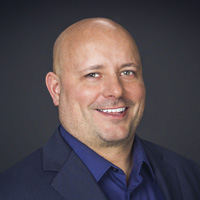Nearing Retirement? Ditch ‘Hidden’ 401(k) Fees
Your 401(k) may be costing you more than you realized. An in-service direct transfer to an IRA could be a game changer – if you qualify.


If you’re closing in on retirement — maybe five to 10 years away – you’re probably paying more attention than ever to your 401(k) balance and returns.
But when was the last time you took a hard look at how much you’re paying in “hidden” 401(k) plan fees?
Although the Department of Labor says plan sponsors must provide a breakdown of account charges at least once a year with a participant-fee-disclosure notice, many people never read theirs — or even the portion of their quarterly statements that contains information about expenses.

Sign up for Kiplinger’s Free E-Newsletters
Profit and prosper with the best of expert advice on investing, taxes, retirement, personal finance and more - straight to your e-mail.
Profit and prosper with the best of expert advice - straight to your e-mail.
That’s a mistake.
The goal of a 401(k), after all, is to save as much as possible for retirement. And that’s harder to do if, over time, high hidden plan fees keep nibbling away at that money, reducing the growth in your account.
How Much Can 401(k) Fees Cost You?
Even in the short term, from one year to the next, hidden fees can do some damage — especially if you manage to stash away a significant amount in a 401(k) or similar employer plan.
That doesn’t mean that you shouldn’t take advantage of the convenience of saving in an employer-sponsored plan or the opportunity to get matching contributions.
But if you’ve got $1 million in your 401(k), and your plan charges 1% of your account balance to cover its hidden fees each year (a typical amount), that’s $10,000 coming out of your 401(k) balance every year.
That’s not a nibble. It’s a bite. And some investors pay 1.5% or even 2% in hidden plan fees on 401(k) plan assets every year.
Could an In-Service Direct Transfer Help You?
Though you may be thinking of your account fees (if you were aware of them at all) as “the cost of doing business,” that’s not necessarily true. Even if you’ve been saving in the same plan for decades and have a healthy nest egg sitting in your 401(k), you may be able to cut your hidden plan fees.
In fact, if you’re 59½ or older, you likely have a strategy available to you that your younger co-workers don’t. It’s called an in-service 401(k) direct transfer, and it could make a lot of sense for you.
What’s an in-service direct transfer?
You’ve likely had friends who have transferred funds from a 401(k) to a traditional or Roth IRA when they left one or more jobs through the years. Or maybe you’ve done it yourself. Well, an in-service direct transfer works much the same way. If you’re 59½ or older, and your employer’s plan allows it, which most do, you can move your balance directly from your 401(k) to an IRA and enjoy several potential benefits, including:
- More control. With an IRA, you may have greater fee transparency. You’ll have to do your homework to be sure your new account is less expensive than your employer’s, but doing a direct transfer into an IRA could save you in hidden 401(k) plan administrative fees, mutual fund expense ratios and other hidden costs that can reduce your returns.
- More investment choices. IRAs generally can offer a wider range of options than 401(k) plans, which can be limited. So not only will you have a potentially better opportunity to comparison-shop for investments with lower costs, you may also be able to add more diversity to your portfolio as you move toward retirement. An IRA can put you in a position to invest in stocks, bonds, exchange-traded funds, real estate investment trusts, precious metals and more.
- It may make it easier to do a Roth conversion. Many 401(k) plans don’t have a Roth option, and many that do don’t have a Roth conversion option. But if you perform an in-service direct transfer to an IRA, you can perform Roth conversions if and when you choose.
- You can still contribute new money to your 401(k). If your employer offers a matching contribution, you can continue contributing to your 401(k) to get that money. Your account will remain open, so you can keep the convenience and benefits of your workplace retirement plan, but you’ve removed the effect of paying hidden 401(k) plan fees on your entire balance.
Get Some Answers Before You Act
Because different employer-sponsored plans have different rules, you should ask your plan administrator about eligibility and other requirements before you move forward with this strategy.
It’s also a good idea to discuss your concerns about account fees — and the strategies available to help reduce them — with an independent financial adviser.
Every financial decision comes with pros and cons, so you’ll want to thoroughly talk this one through. An adviser who has a legal obligation to look out for your best interests and can help you maximize your retirement plan savings … even if your retirement is just a few years away.
Kim Franke-Folstad contributed to this article.
Disclaimer
Scott Tucker Solutions, Inc is an independent financial services firm that utilizes a variety of investment and insurance products. Investment advisory services offered only by duly registered individuals through AE Wealth Management, LLC (AEWM). AEWM and Scott Tucker Solutions, Inc. are not affiliated companies. 1122250 – 11/21
Disclaimer
Neither the firm nor its agents or representatives may give tax or legal advice. Individuals should consult with a qualified professional for guidance before making any purchasing decisions. Our firm is not affiliated with or endorsed by the U.S. Government or any governmental agency.
Disclaimer
Appearances on Kiplinger.com were obtained through a paid PR program. The columnist received assistance from a public relations firm in preparing this piece for submission to Kiplinger.com. Kiplinger was not compensated in any way.
Get Kiplinger Today newsletter — free
Profit and prosper with the best of Kiplinger's advice on investing, taxes, retirement, personal finance and much more. Delivered daily. Enter your email in the box and click Sign Me Up.

Scott Tucker is president and founder of Scott Tucker Solutions, Inc. He has been helping Chicago-area families with their finances since 2010. A U.S. Navy veteran, Scott served five years on active duty as a cryptologist and was selected for duty at the White House based on his service record. He holds life, health, property and casualty insurance licenses in Illinois, has passed the Series 65 securities exam in 2015 and is an Investment Adviser Representative.
-
 3 Ways to Stream The Masters and Save Money
3 Ways to Stream The Masters and Save MoneyIf you plan to stream The Masters and are looking for ways to save, we'll show you several options.
By Sean Jackson Published
-
 Stock Market Today: Tariff Talks Drive Another Up-and-Down Day
Stock Market Today: Tariff Talks Drive Another Up-and-Down DayTrade war negotiations are happening, but the "fear gauge" is gyrating, and investors, traders and speculators are still searching for signs of a bottom.
By David Dittman Published
-
 Little-Known Ways to Guard Your Retirement Income
Little-Known Ways to Guard Your Retirement IncomeIs your retirement income safe if stocks continue to plummet? Most retirees don't know these reliable options to limit their market exposure.
By Jacob Cornell Published
-
 Three Warning Signs Your Investments Are (Needlessly) Too Risky
Three Warning Signs Your Investments Are (Needlessly) Too RiskyAll investments come with risk, but the secret is to take only enough risk to get you to your specific savings goals — and no more than that.
By Eric Roberge, Certified Financial Planner (CFP) and Investment Adviser Published
-
 His Employees Don't Work 'For' Him, But 'With' Him
His Employees Don't Work 'For' Him, But 'With' HimWhile it might not seem that way, there are indeed employers out there who value the relationships they have with their employees. Here's an example.
By H. Dennis Beaver, Esq. Published
-
 Reduce Your Retirement Tax Risk With the Three-Bucket Strategy
Reduce Your Retirement Tax Risk With the Three-Bucket StrategySplitting retirement funds into three buckets with distinct tax treatments can help you avoid a nasty tax bill down the line. Here's how the strategy works.
By Bryan S. Slovon, Investment Adviser Published
-
 Financial Fact vs Fiction: This Roth Conversion Myth Could Cost You
Financial Fact vs Fiction: This Roth Conversion Myth Could Cost YouWhile some 'golden rules' stay in style forever, the financial landscape is constantly evolving. Here are five common myths to revisit (with more on the way).
By Scott McClatchey, CFP® Published
-
 Give Now or Leave an Inheritance? How to Balance the Options
Give Now or Leave an Inheritance? How to Balance the OptionsYou've saved enough money for retirement. But can you afford to give some to family or good causes — and when is best? These are the key points to consider.
By Deana Healy, CFP® Published
-
 How to Age-Proof Your Retirement Plan
How to Age-Proof Your Retirement PlanLongevity risk is a big threat to your retirement, but there are several strategies to protect yourself from running out of money, no matter how long you live.
By Nico Pesci Published
-
 Retirement Planning for Couples With a Generation Gap
Retirement Planning for Couples With a Generation GapDo you and your partner have different retirement timelines and attitudes to saving? It is possible to make plans together. This is how one couple did it.
By Phil Wright, Certified Fund Specialist Published